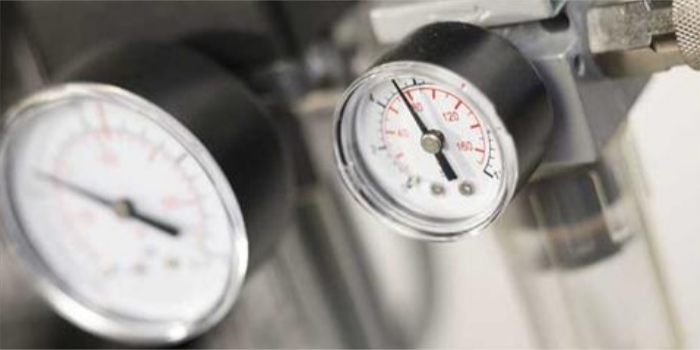
Air quality: How to get it right
Temperature, pressure and humidity have critical roles to play in textile manufacturing processes. Equally important is the maintenance of right air quality for obtaining optimum output. This article explains the effects of humidity on textile products & processes, and how to pick the right air engineering solutions.
Every textile is affected by the relative humidity (RH) of the environment in which it is produced, particularly natural fibres. Low air humidity can dry a fibre causing its internal moisture content to fall below the optimum processing level. When this happens, a fibre’s tensile strength is impaired, it becomes less flexible and more brittle. A low relative humidity can reduce yield by around 4 per cent directly from product weight loss.
“Temperature, pressure and humidity are some of the important physical factors of the atmosphere which play very important role in the manufacturing process of textile yarns. The properties like dimensions, weight, tensile strength, elastic recovery, electrical resistance, rigidity of all textile fiber whether natural or synthetic are influenced by moisture regain,” explains S Senthil Kumar, Assistant Professor, Department of Handloom and Textile Technology, Indian Institute of Handloom Technology, Salem, Tamil Nadu.
Some physical properties of textile materials, which are affected by humidity, are given below:
Thus, it is important to maintain air quality for textile units involved in spinning, weaving, knitting, etc. “Many properties of textile materials vary considerably with moisture regain (which is the ratio of the moisture to the bone-dry weight of the material expressed as a percentage). This, in turn, is affected by the ambient RH and temperature. Ideal humidity levels increase the strength of the fibre, lower static electricity and heat levels by evaporation and settles the fluff and dust in the air. From cotton to yarn to weaving, each process requires different RH levels and the same applies to different fibres,” says Sujeeth Pai, Director of Sales and Service for Danfoss Drives in India.
Spinning
Humidity is a vital necessity to the textile industry. Maintaining appropriate humidity and temperature ensures that there are no changes in dielectric properties and tensile properties of fibres. It is also important for maintaining a clean working environment. Senthil Kumar explains, “The generation of static electricity while processing in spinning and weaving creates dust and fibre fly (fluff). Higher moisture content lowers the insulation resistance and helps to carry off the electrostatic charge. Hence, relative humidity needs to be maintained to avoid the problems of yarn breakage in dry and brittle condition and also minimise the build-up of static charge so as to reduce dust and fibre fly (fluff).”
Relative humidity can cause fibres to stick and lead to formation of laps on the rolls which disrupt the production process. Removal of laps is not only a manual and time-consuming process, but results in the damage to machine parts, especially the rubber coatings. “Fibres become brittle and store electric charges generated because of friction between the fibres during their individualisation process when atmospheric relative humidity is very low,” opines Senthil Kumar.
The sophisticated electronic controls in modern textile machinery require controlled temperature which should not exceed 33°C or so. It is also necessary to limit the range of temperature to which the textile machinery is exposed, as the steel and aluminium parts – which expand at different rates with temperature rise – may be subjected to mechanical stress. Hence, along with the maintenance of stable relative humidity conditions, recommended for different textile processes, it is also desirable to maintain the temperature level within a range, without fluctuation. In spinning, lower humidity is one of the major reasons for increased hairiness.
Weaving efficiency
The warp yarns are coated with size film. The environment should be suitable for the size film on the yarn. Too low humidity makes size film brittle resulting in cracking of the film, where as
too high humidity makes the beam soft.
“When the humidity levels are too low for the textile material, the material will be brittle. When weaving the material, it will most likely break and certainly will not be stable. Humidifying the room will make the cotton or other textile material of a reasonable strength so it is quite simple to weave and move around. If the humidity level is too high the cotton can clump up and this will make it pretty much impossible to weave. Weaving rooms need high relative humidity of 80–85% warp sheet level, whereas it would suffice to maintain general humidity condition in the room at around 65% RH. Optimal humidification reduces yarn breakages in weaving, reducing machine downtime as well as loom stop marks and weavers knots in the finished product,” explains Senthil Kumar.
Knitting
It is important to maintain humidity of a unit for quality reason for operational efficiency or minimising yarn breakages. Right humidification also helps in maintaining regular weight of a textile material and establishes a healthy environment (less pollution by loose air borne fibres, reducing dust and pollutant suspension which leads to less headache and dry mucous membranes among the employees). Humidification is maintained by simply adding water to the air.
Knitting action may increase the abrasion among the yarns which finally leads to yarn breakage. To prevent abrasion, one needs to control temperature and humidity. Senthil Kumar elaborates, “Recommended conditions for prevention of the breakage are 25 ± 1.1°C and 55% ± 5% RH. Increasing this RH value results in ball formation of the protruding fibres of the yarn and this ball get stuck in the knitting machine resulting in yarn breakage. Also, when the RH value goes down the prescribed value yarn breakage takes place due to friction between the yarn and the machine. Thus, it is necessary to maintain optimum relative humidity.”
CATEGORIES Sustainability




